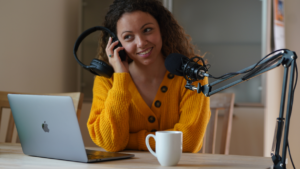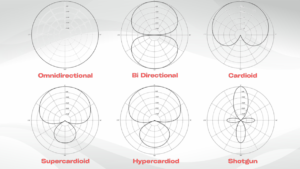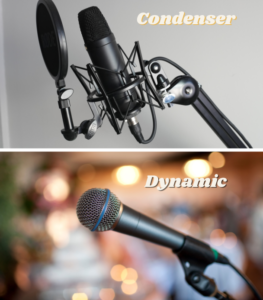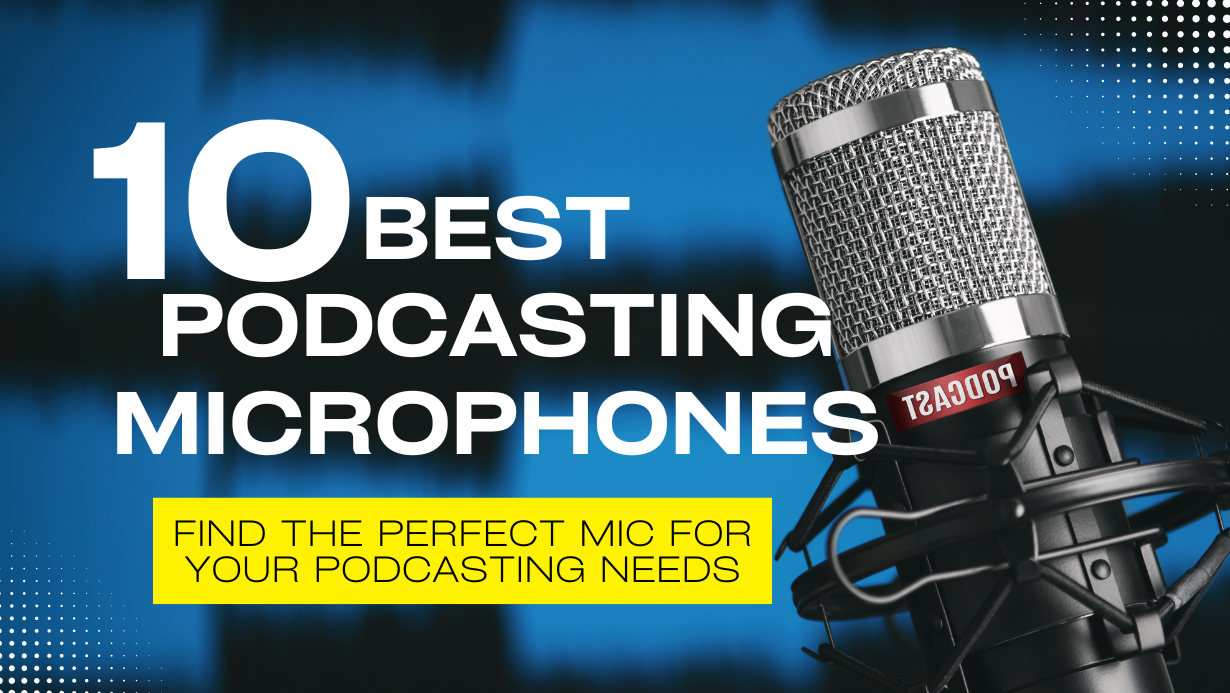Congratulations on getting your podcast off the ground! However, finding that perfect microphone for podcasting can be a bit of a hurdle. Great audio
Congratulations on getting your podcast off the ground! However, finding that perfect microphone for podcasting can be a bit of a hurdle. Great audio quality is key if you want to make waves in the world of podcasts. It’s also vital for marketing and promoting your brand – clear sound keeps listeners tuned in. If you’re wondering which microphones are best for podcasting, don’t worry – this article has got all the information you need.
Why Are Podcasting Microphones Important?
Having a high-quality microphone is key to producing an excellent podcast. If your sound quality isn’t crisp and clear, listeners may become bored or frustrated, leading to fewer downloads and subscribers.
Remember, our ears are incredibly sensitive – they can pick up all sorts of sounds. So when you’re podcasting, which primarily revolves around audio content, the quality of your sound becomes the backbone of your production. It’s not just about having good content; it’s also about delivering that content in a pleasant and engaging manner for your audience’s ears.

A good microphone is the “secret sauce” that makes your podcast enjoyable. It captures your voice without background noise, making it easier for listeners to understand what you’re saying. It also reduces the post-production work you need after recording, saving you time and energy.
Investing in the best microphone for recording is critical to ensuring your podcast is enjoyable.
How To Choose The Best Podcasting Microphones?
When selecting a microphone for recording your podcast, weighing the various features of the different microphones available is crucial to determine which one is best suited for your needs.
 Your Location
Your Location
When deciding on a podcast mic, the recording location is one of the most critical factors. Will you record in a studio, bedroom, office, or public space? It is vital to take into account the level of noise in the room, as well as any potential interruptions from family members, roommates, or passers-by. Additionally, think about whether you will be recording in one location or if you will be moving around frequently to different spaces to record.
 Recording Patterns
Recording Patterns
It’s important to consider the recording pattern. The five microphone recording patterns range from enthusiast to professional, including omnidirectional, bidirectional, cardioid, hypercardioid, and supercardioid.

Cardioid mics are best for recording sound directly in front of the element and boast effective rejection of off-axis noise. If you can only budget for a single mic, bidirectional mics are suitable for one-on-one chats. While an omnidirectional pattern is best when multiple speakers are encircled around a single mic. For numerous speakers lined up in front of the mic, a stereo pattern is ideal. Though it won’t record everyone at equal volume, requiring some editing later.
 Budget
Budget
It is possible to find microphones at a wide range of prices, some costing less than $100. You don’t have to spend a lot of money to get quality audio, as many budget-friendly options might even be better than some of the more expensive ones.
 USB Vs XLR Podcasting Microphones
USB Vs XLR Podcasting Microphones
USB microphones are more convenient and pocket-friendly to use. Simply connect them to your Mac or PC, and you can begin recording.

On the other hand, XLR condenser mics require a power source from an external device like a microphone preamp or audio interface to function. The recording quality from XLR mics is usually better, and you can also adjust the settings of the mics using the preamp or interface for more versatility. Either way, both types of mics are suitable.
 Condenser Vs Dynamic
Condenser Vs Dynamic
Dynamics are sturdier, less sensitive to sound than condensers, and can handle louder recordings. Also, they tend to produce a warmer, “broadcast” or “radio” type sound. Dynamic microphones are an excellent choice for recording in a home setting due to their noise-masking capabilities.
If you’re doing a podcast indoors and want to create a pleasant sound atmosphere for listeners, a condenser microphone would be a better option. Condensers can capture more nuanced vocal recordings but also pick up more background noise. To avoid this, paying attention to the acoustic environment when recording is important.
Our Top Pick For The Best Podcasting Microphones
|
|
|
|
|
|
|
|
|
|
Conclusion: The Best Podcasting Microphones for Your Needs
To create an engaging podcast, it is essential to have not only great content but also a high-quality microphone. To help you make the right choice, this guide will provide you with the necessary information. Now get out there and start recording!

 Rode Podmic
Rode Podmic Shure SM7B
Shure SM7B Blue Yeti X
Blue Yeti X Auio Technica ATR2100x
Auio Technica ATR2100x Rode Procaster
Rode Procaster Electro-Voice RE20
Electro-Voice RE20 Shure MV7
Shure MV7 Heil PR40
Heil PR40 Samson Go
Samson Go Blue Ember
Blue Ember
COMMENTS